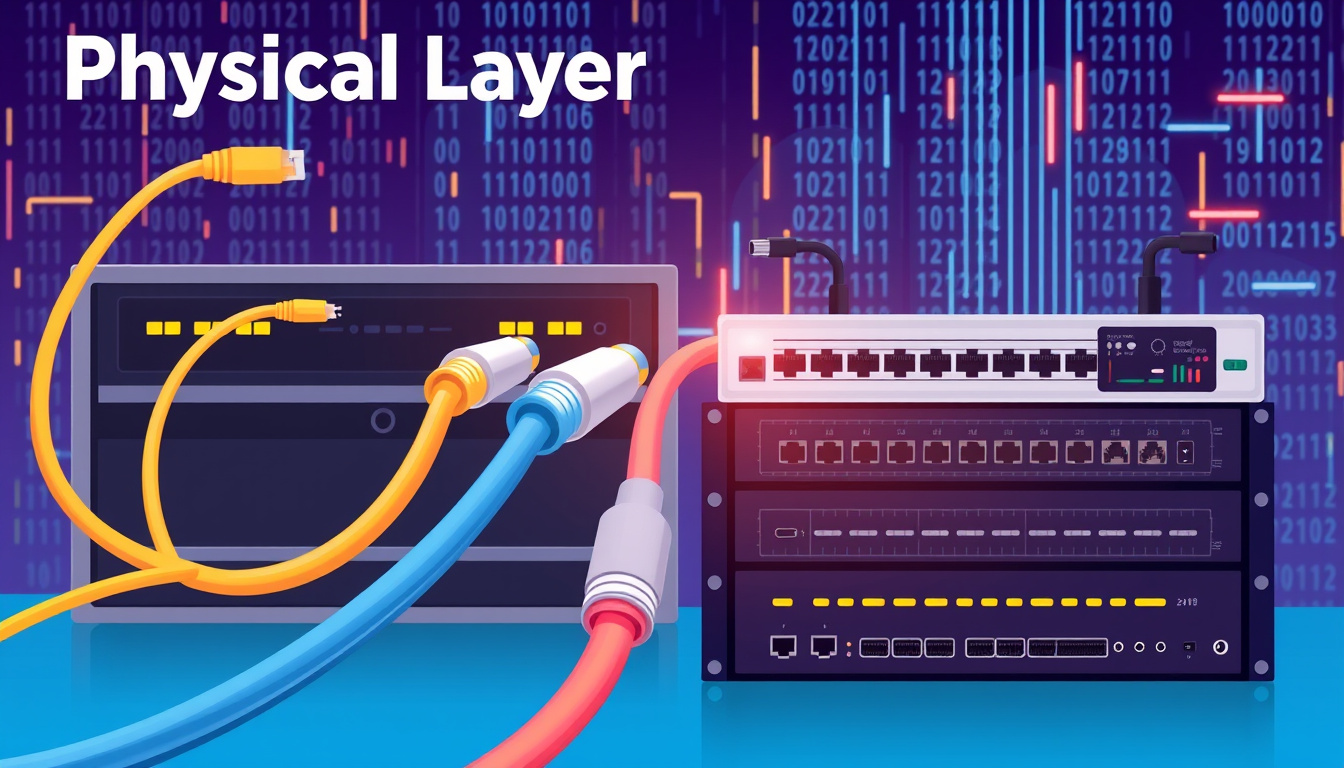In the intricate world of networking, the physical layer serves as the crucial foundation for all communication processes. Recognized as the first layer of the Open Systems Interconnection (OSI) model, the physical layer is responsible for the transmission and reception of raw bitstreams over a physical medium, such as electrical wiring or optical fibers. This article delves into the essential functions, protocols, and technologies associated with the physical layer, structured to enhance your understanding of this fundamental aspect of networking.
Understanding the Physical Layer
The physical layer is the lowest layer of the OSI model, facilitating the transmission of raw binary data between network devices. It encompasses various mechanical and electrical characteristics that define how signals are sent and received. Key functions of the physical layer include:
-
Bit Representation: It defines how binary data (0s and 1s) is converted into signals suitable for transmission. This includes the specification of electrical voltage levels, light wavelengths, and radio frequencies.
-
Data Rate: The physical layer determines data transfer speeds, measured in bits per second (bps), impacting how swiftly data can be communicated.
-
Transmission Modes: The layer manages different communication modes:
- Simplex: One-way communication where one device transmits and the other receives.
- Half-Duplex: Two-way communication but not simultaneous; devices take turns.
- Full-Duplex: Simultaneous two-way communication is possible.
-
Clock Synchronization: The physical layer ensures that sending and receiving devices maintain synchronization, crucial for accurate data interpretation.
-
Configuration: It specifies the physical layout of devices in a network, including point-to-point and multipoint configurations.
-
Signal Modulation and Equalization: Converts transmit data into a format appropriate for the chosen medium, while equalization techniques improve signal quality, particularly over long distances.

Physical Layer Topologies
Physical topologies describe the arrangement of various network devices and their connections. Common types include:
-
Bus Topology: All devices share a single communication line or "backbone," receiving messages transmitted by any device on that line.
-
Star Topology: All nodes connect to a central hub, facilitating easy management and troubleshooting.
-
Ring Topology: Each device connects to two others, forming a circular pathway for data.
-
Mesh Topology: Every device is interconnected, allowing for multiple pathways for data which enhances reliability.
-
Hybrid Topology: A combination of different topologies tailored to specific needs for performance and scalability.
Physical Layer Protocols
The physical layer comprises a variety of protocols that govern how data is transmitted across different media. Some notable examples include:
-
Ethernet (IEEE 802.3): The predominant standard for wired local area networks (LANs), facilitating both half-duplex and full-duplex communication.
-
Wi-Fi (IEEE 802.11): A widely used standard for wireless communication, enabling devices to connect without physical cables.
-
Bluetooth (IEEE 802.15): A short-range wireless communication standard, ideal for connecting personal devices.
-
Universal Serial Bus (USB): A standard for connecting various devices to enable data transfer and charging.
Advantages and Limitations of the Physical Layer
Advantages:
-
Standardization: It provides universal standards for cables, connections, and signaling, ensuring interoperability among different systems and devices.
-
Support for Various Media: It functions effectively with both wired (e.g., Ethernet) and wireless (e.g., Wi-Fi) technologies, promoting versatility in network design.
Limitations:
-
Error Detection and Correction: The physical layer is not equipped to handle error correction; it only transmits bits without understanding or processing data.
-
Physical Vulnerability: Hardware components like cables and connectors are subject to physical damage, which can disrupt communication.
-
No Data Processing: The physical layer does not interpret the meaning of the transmitted bits, focusing purely on the transmission aspect.
Conclusion
The physical layer is an indispensable component of the networking architecture, playing a vital role in the successful transmission of data across various media. Its functions, including bit representation, synchronization, and topology arrangement, form the backbone of all higher layers in the OSI model. Understanding the intricacies of the physical layer not only enhances one’s knowledge of network operations but also provides insights into potential areas for improvement and innovation within networking technologies. Whether through wired or wireless communications, the principles of the physical layer underpin virtually all aspects of data transmission today.



